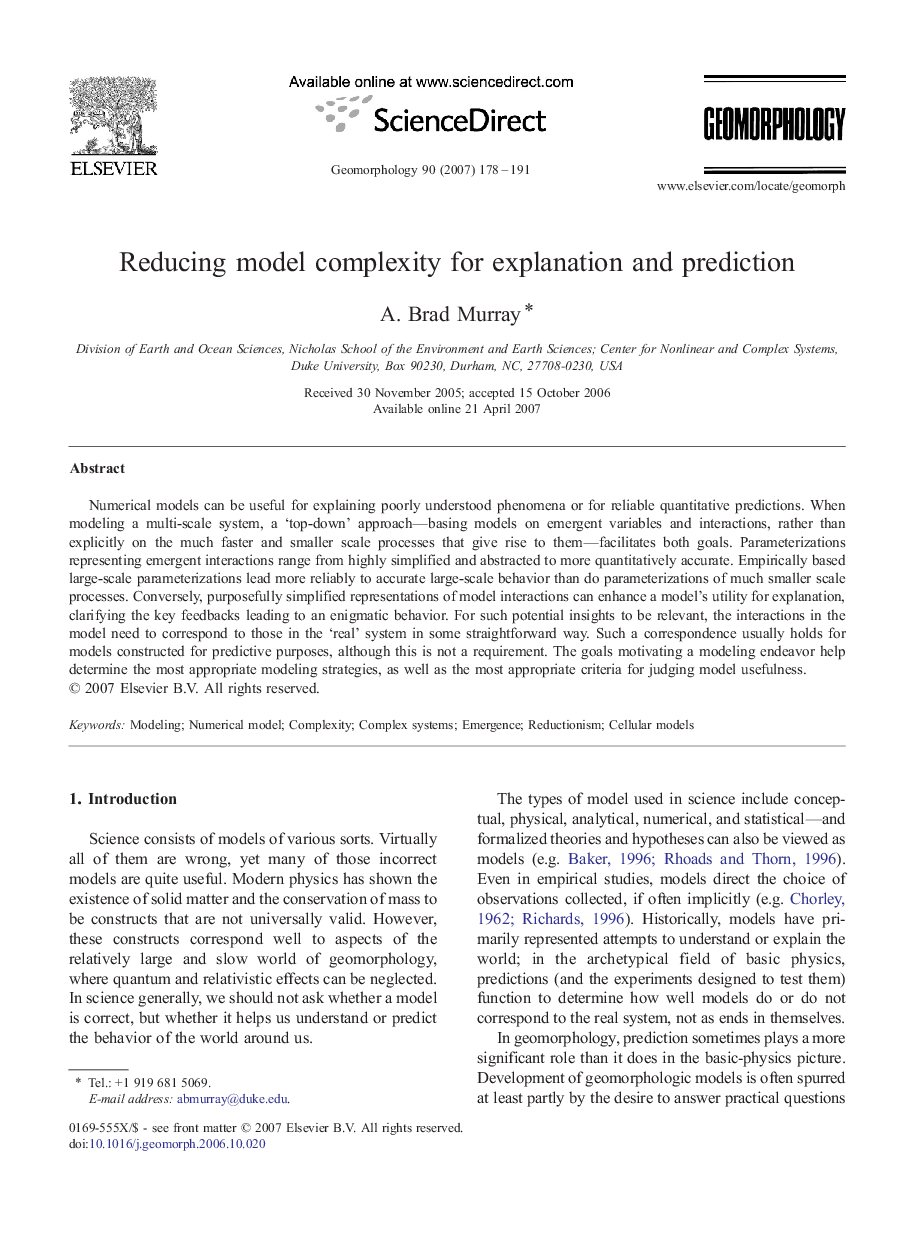| Article ID | Journal | Published Year | Pages | File Type |
|---|---|---|---|---|
| 4687033 | Geomorphology | 2007 | 14 Pages |
Numerical models can be useful for explaining poorly understood phenomena or for reliable quantitative predictions. When modeling a multi-scale system, a ‘top-down’ approach—basing models on emergent variables and interactions, rather than explicitly on the much faster and smaller scale processes that give rise to them—facilitates both goals. Parameterizations representing emergent interactions range from highly simplified and abstracted to more quantitatively accurate. Empirically based large-scale parameterizations lead more reliably to accurate large-scale behavior than do parameterizations of much smaller scale processes. Conversely, purposefully simplified representations of model interactions can enhance a model's utility for explanation, clarifying the key feedbacks leading to an enigmatic behavior. For such potential insights to be relevant, the interactions in the model need to correspond to those in the ‘real’ system in some straightforward way. Such a correspondence usually holds for models constructed for predictive purposes, although this is not a requirement. The goals motivating a modeling endeavor help determine the most appropriate modeling strategies, as well as the most appropriate criteria for judging model usefulness.
